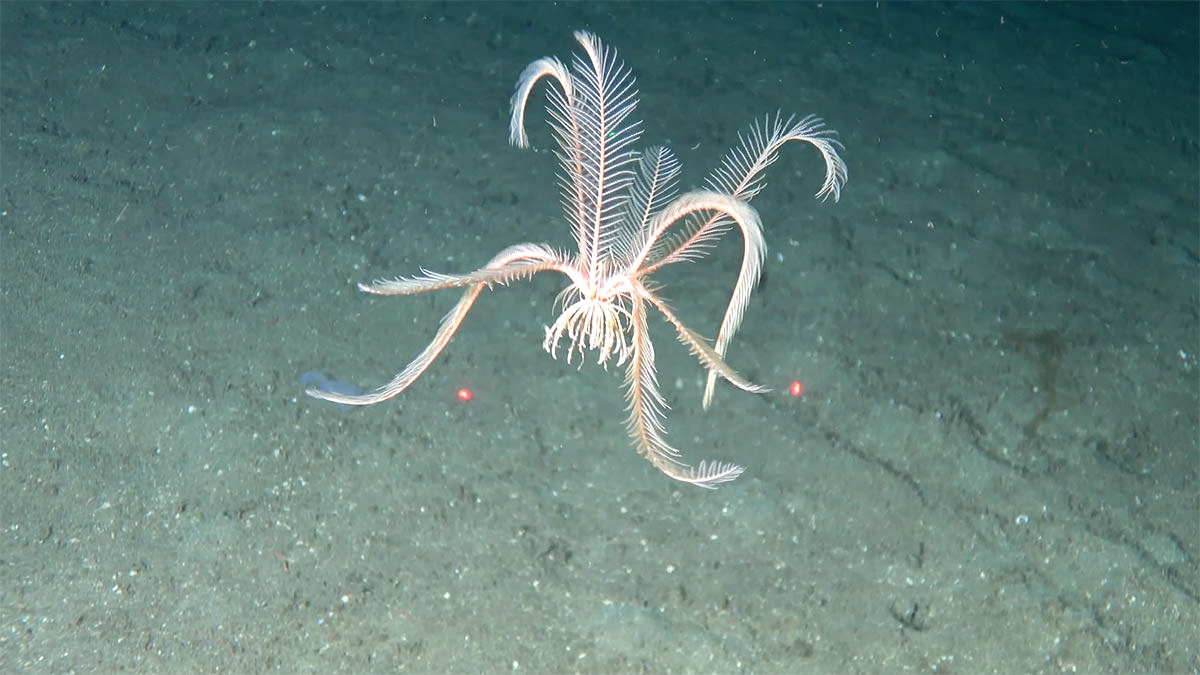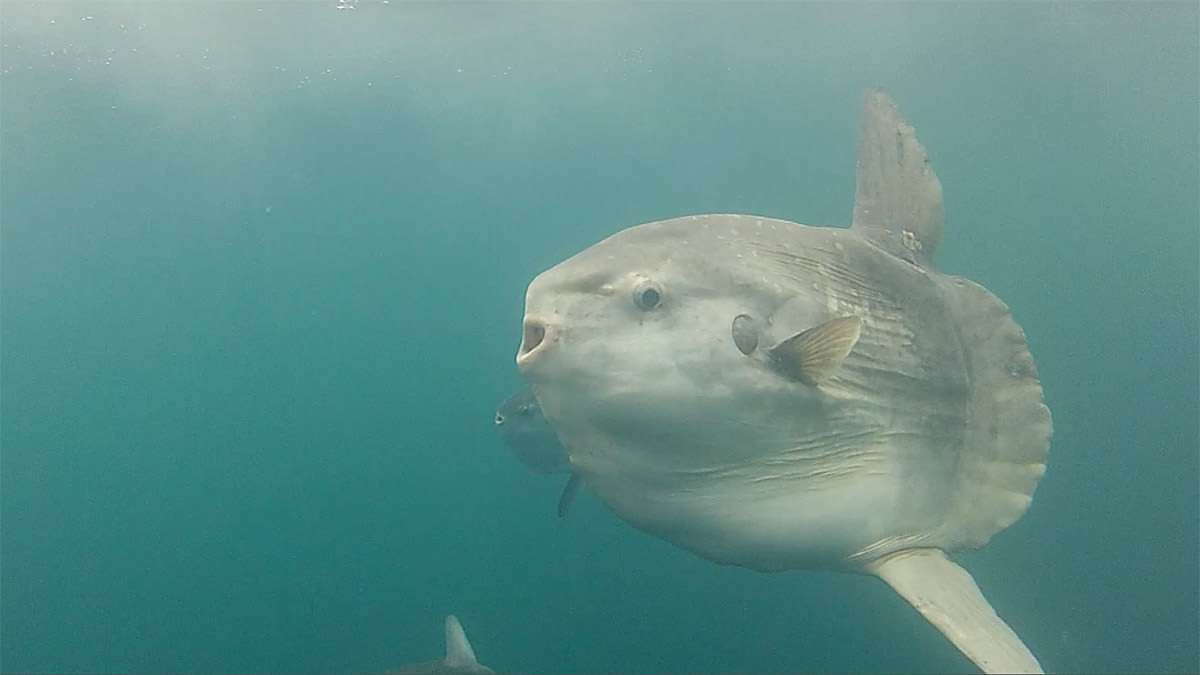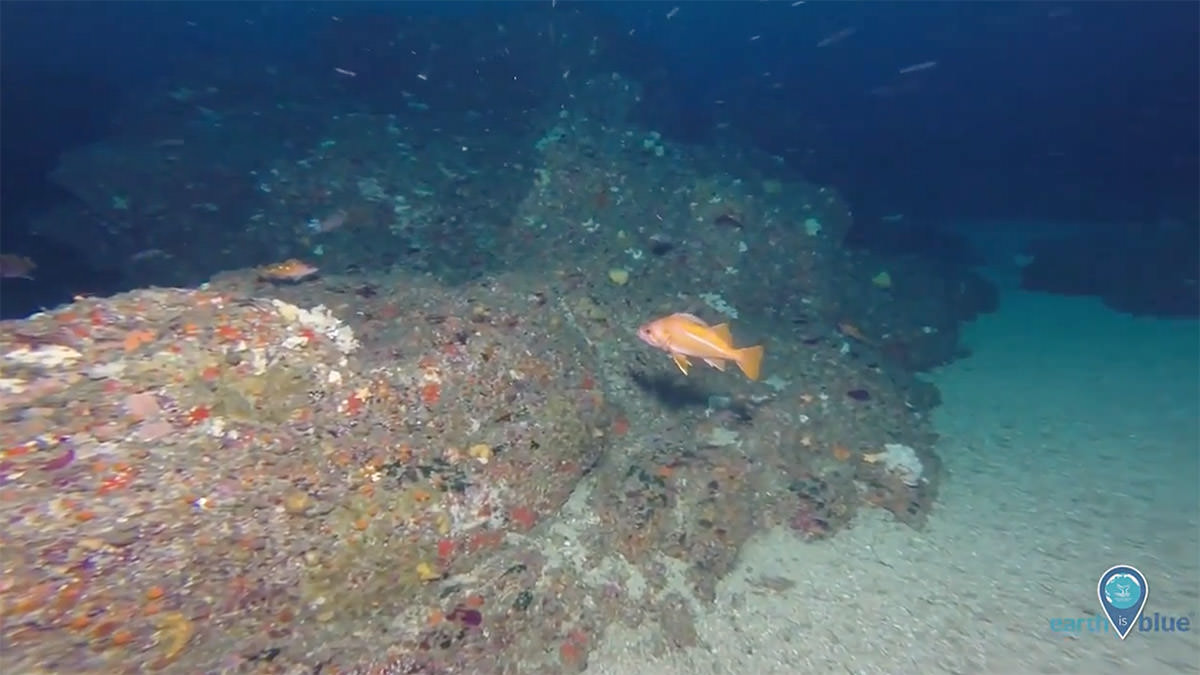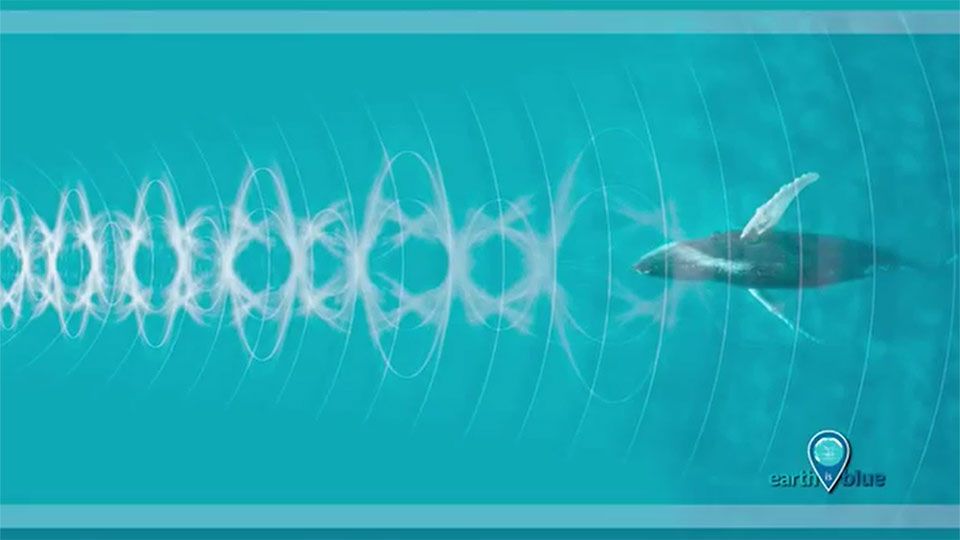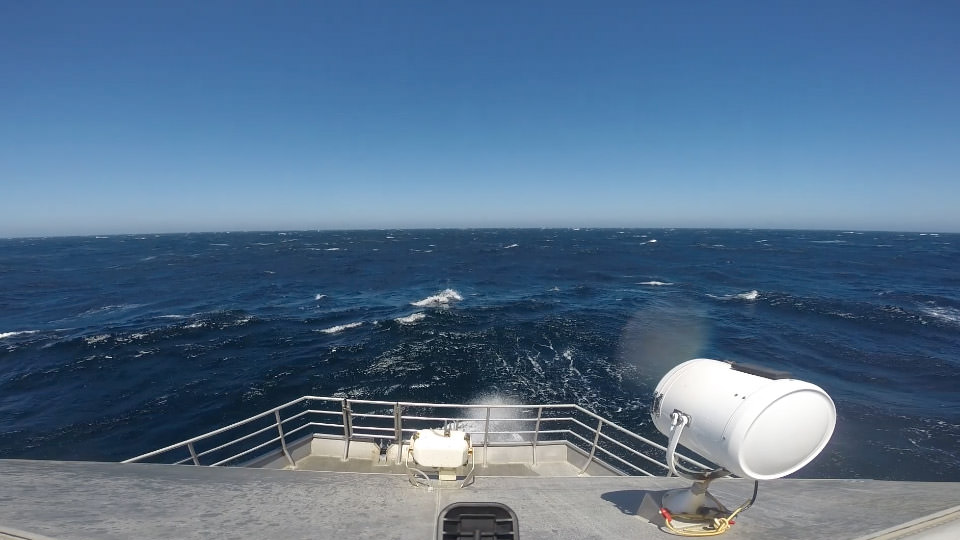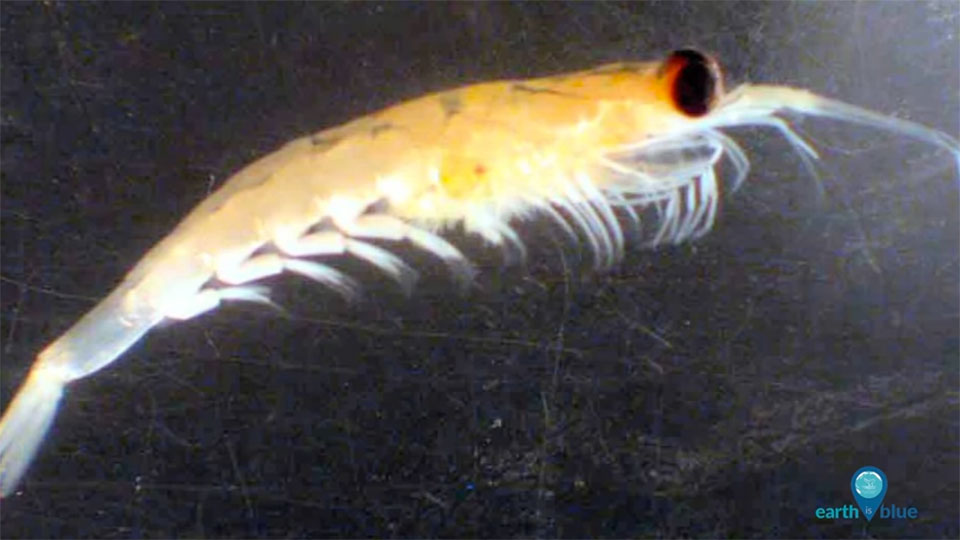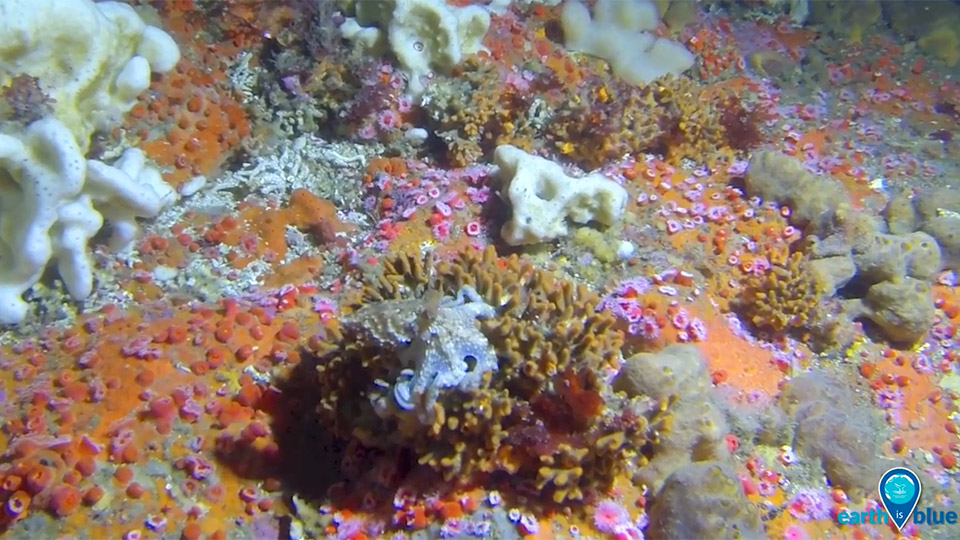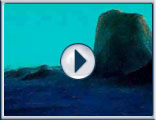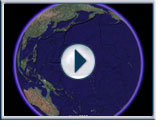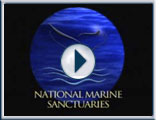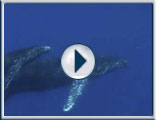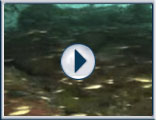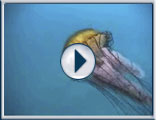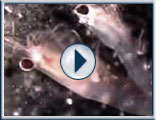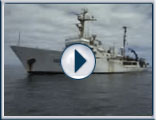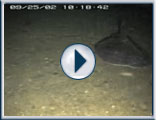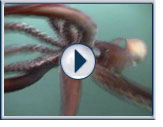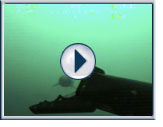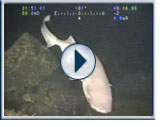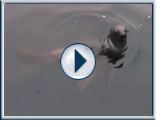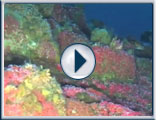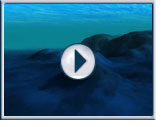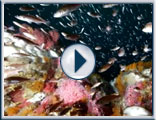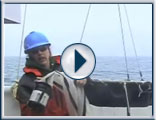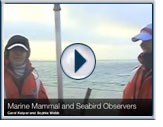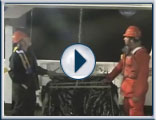This Video gallery is a compilation of videos highlighting Cordell Bank National Marine Sanctuary.
Swimming Crinoids
These ancient echinoderms use their appendages to not only eat, but to move away from predators gracefully.
Mola Monday
Just another "mola monday"- Ocean sunfish or Mola mola frequent sanctuary waters in the summer and fall months feeding on jellies. Sometimes seen schooling, but as they get larger are usually by themselves.
Cordell Bank Geology
Several miles off the shore of Northern California lies an underwater gem: Cordell Bank National Marine Sanctuary Watch our video to discover what makes this colorful habitat so lush.
Noise in the Sanctuaries
How do scientists measure sound in national marine sanctuaries? Check out our video about a new hydrophone in Cordell Bank National Marine Sanctuary to find out! And learn more about noise in sanctuaries.
Researching Marine Mammal and Seabird Food Sources
How do researchers study marine mammal and seabird food sources? With a tucker trawl! Using this system of nets that open and close at different depths in the water column, researchers can sample zooplankton and other small marine organisms. A few weeks ago, researchers for ACCESS Partnership did just that in Greater Farallones National Marine Sanctuary. ACCESS data have been used to help redirect large ships away from important feeding areas and better understand impacts from El Niño and climate change by tracking important seabird and marine mammal forage species.
Zooplankton
Zooplankton like krill may be small, but they are mighty! Because so many marine animals depend on these tiny animals for food, their size and abundance can tell researchers a lot about how healthy an ecosystem is. When there's lots of krill, there also tends to be plenty of seabirds and marine mammals around. Researchers from Greater Farallones National Marine Sanctuary work with ACCESS Partnership to survey the zooplankton in the sanctuary -- check out our video to learn more!
Cordell Bank
Many national marine sanctuaries are far offshore, but onshore exhibits around the country make it possible to get to know these special places without getting wet! Check out our video to learn about the partnership between Cordell Bank National Marine Sanctuary and the Oakland Museum of California. Will you be visiting one of these exhibits soon?
Cordell Bank National Marine Sanctuary Expansion
Two of NOAA's national marine sanctuaries, Cordell Bank and the Gulf of the Farallones, have expanded their boundaries to encompass more of California's beautifully diverse waters. Watch our video tour of these incredible places to see what all the fuss is about!
California Hydrocoral on Cordell Bank
California hydrocoral is a fragile coral that grows at the rate of about 1 cm a year. It thrives in a few areas on Cordell Bank. Like a tree in the forest, this organism provides shelter, support, and food for many other animals. Deep corals like hydrocoral don't have photosynthetic algae in them, but rely on the currents around them to deliver plankton for food. Who knew that our cold Central California waters had such tropical looking reefs?
Click here to download this Apple QuickTime video. (6.7MB MOV)
Where is Cordell Bank?
Take a geographic, bathymetric tour of Cordell Bank. Where is it? This animation was created using high resolution bathmetry data of Cordell Bank by the following: Ocean visualizations - CSUMB (EcoViz - F. Watson, S. Cornish, T. Anderson, W. Newman, T. Thein, J. Maas-Baldwin, A. Guzman); Bathymetry/topography - CSUMB (Sea Floor Mapping Lab - R. Kvitek, P. Iampietro) and USGS. Funding for EcoViz provided by NASA Office of Earth Science "Research Education Applications Solutions Network (REASoN)" (NCC13-03009)
Click here to download this Apple QuickTime video. (10.9MB MOV)
Cordell Bank National Marine Sanctuary on Google Earth
Produced prior to the expansion of Cordell Bank and Gulf of the (now "Greater") Farallones national marine sanctuaries in 2015.
Click here to download this Apple QuickTime video. (10.9MB MOV)
Giant Pacific Octopus
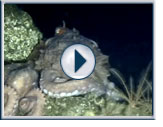
Giant Pacific Octopus are seen regularly at Cordell Bank. With an abundance of food at their tentacle tips, and lots of rocky hiding spots, Cordell Bank is a good home for this large invertebrate. Video footage credit: Kip F. Evans/Cordell Bank NMS
Click here to download this Apple QuickTime video. (45.2MB MOV)
Cordell Bank National Marine Sanctuary Habitats
This movie displays how scientists dive in a submersible to discover different habitats and depths in Cordell Bank National Marine Sanctuary. This video is on exhibit at Point Reyes National Seashore Bear Valley Visitor Center in the Coast and Ocean section. Credit: Kip F. Evans Photography/CBNMS
Click here to download this Apple QuickTime video. (8.2MB MOV)
Biodiversity Video
Learn about the similarity and differences between Hawaiian Island Humpback Whale National Marine Sanctuary and Cordell Bank National Marine Sanctuary. Go towww.nationalgeographic.com/xpeditions to find lesson plans to accompany this video. This video was created for National Geographic and NOAA by Kip F. Evans.
Click here to download this Apple QuickTime video (10.1MB MP4) Click here for video transcript.
Black-footed Albatross
This movie shows Black-footed Albatross soaring over the waters of Cordell Bank National Marine Sanctuary. These birds make incredible round trip foraging trips from the Northwest Hawaiian Islands during breeding season to find food for their chick. Credit: video footage: Jamie Hall
Click here to download this Apple QuickTime video. (548KB MOV)
Juvenile Rockfish
This video was taken through the porthole of the Delta Submersible on Cordell Bank. It shows large numbers of juvenile rockfish during very good year schooling around Cordell Bank. Juvenile rockfish numbers vary year to year based on breeding success of adult rockfish, upwelling conditions, etc.
Click here to download this Apple QuickTime video. (3MB MOV)
Jellies
This movie shows Chrysora jellies and Egg Yolk jellies using the pelagic realm. Jellies are food for ocean sunfish (Mola mola) and rarely seen leatherback sea turtles. Video footage provided by Scot Anderson.
Click here to download this Apple QuickTime video. (1.9MB MOV)
Krill
This movie shows krill as soon through a microscope and through the porthole of the Delta submersible. Krill are a keystone species for many migratory and local species of birds, mammals, and fishes in Cordell Bank National Marine Sanctuary waters.
Click here to download this Apple QuickTime video. (2.1MB MOV)
Research Methods
This movies shows a few clips taken from research trips out at Cordell Bank National Marine Sanctuary. It shows the NOAA Ship MCARTHUR, the launching of a remotely operated vehicle, the launch and recovery of a CTD (Conductivity, Temperature, and Depth sensors), the launch of a manta net that is used to sample the surface of the ocean.
Click here to download this Apple QuickTime video. (3.5MB MOV)
Torpedo Ray
This movie shows a torpedo ray in close proximity to a crab. Does it get the crab?
Click here to download this Apple QuickTime video. (584KB MOV)
Humboldt Squid
Humboldt Squid have moved up the coast and have been seen regularly at Cordell Bank NMS. This video shows squid near the surface and at depth through the porthole of the Delta Submersible. Video Footage:Credit: first half: Scot Anderson, 2nd half: Cordell Bank National Marine Sanctuary.
Click here to download this Apple QuickTime video. (3.5MB MOV)
Salmon Shark
Salmon Shark approaches a Remotely Operated Vehicle Credit: Cordell Bank National Marine Sanctuary
Click here to download this Apple QuickTime video. (1.8MB MOV)
Six-gill Shark
A Six-gill Shark approaches a remotely operated vehicle.
Click here to download this Apple QuickTime video. (1MB MOV)
Anchovy Bait Ball
Watch an anchovy bait ball swarm tightly. Video footage provided by Scot Anderson.
Click here to download this Apple QuickTime video. (10MB MOV)
Northern Fur Seal
Watch a northern fur seal as it swims at the surface of the water.
Click here to download this Apple QuickTime video. (6.8MB MOV)
Cordell Expeditions
Hear about the early explorations on Cordell Bank prior to it becoming a sanctuary in 1989. This is a clip from Cordell Bank: Blue Water Oasis a 15 minute film.
Produced prior to the sanctuary expansion in 2015.
Click here to download this Apple QuickTime video. (14.8MB MOV)
Click here to download the transcript. (40k PDF)
Cordell Bank: Blue Water Oasis
This film provides a biological overview of what makes Cordell Bank's waters so special for such a diversity of marine life.
Produced prior to the expansion of Cordell Bank and Gulf of the (now "Greater") Farallones national marine sanctuaries in 2015.
Click here to download this Apple QuickTime video. (73.7MB MOV)
Click here to download the transcript. (1.9MB PDF)
Deep-water corals
Deep-water corals, The Natural Laboratory: A podcast exploring science for Bay Area National Parks: Focus on Deep-water corals of Cordell Bank National Marine Sanctuary.
Produced prior to the expansion of Cordell Bank and Gulf of the (now "Greater") Farallones national marine sanctuaries in 2015.
Click here to download this Apple QuickTime video. (45.2MB MOV)
Click here to download the transcript. (40 KB)
What does a CTD do?
Click here to download this Apple QuickTime video.(1.5MB MOV)
Click here to download the transcript. (28 KB)
What does a hoopnet do?
Click here to download this Apple QuickTime video. (2.1MB MOV)
Click here to download the transcript. (29 KB)
How do observers count marine mammals and seabirds?
Click here to download this Apple QuickTime video. (3.4MB MOV)
Click here to download the transcript. (31 KB)
What is a tucker trawl net?
Click here to download this Apple QuickTime video. (3.5 MB MOV)
Click here to download the transcript. (28 KB)


